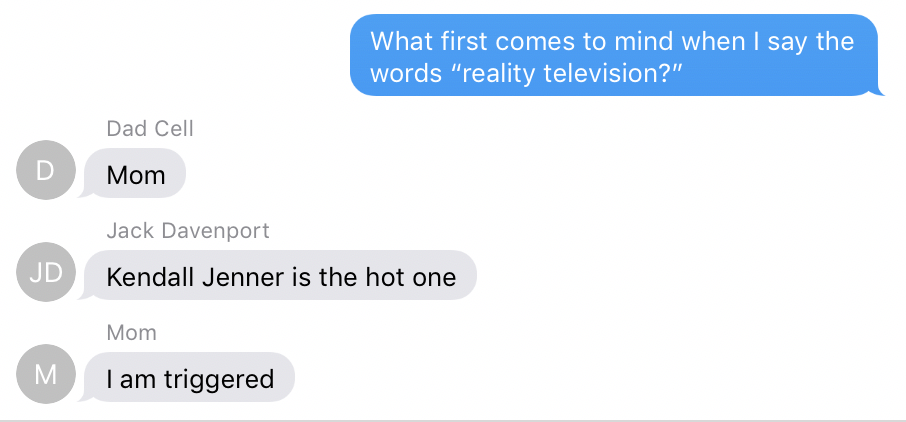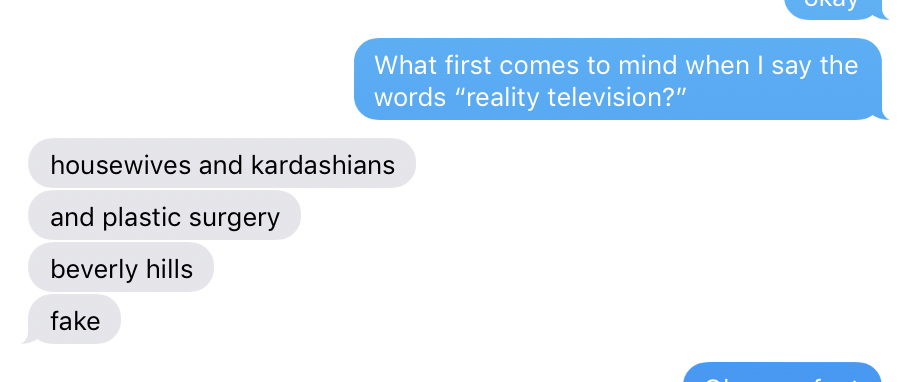“Keeping Up with the Kardashians” has become the epitome of the reality television genre. If one were to ask strangers on the street (Jimmy Fallon style) what first comes to mind when one says the words “reality television,” many of them would say something that relates to the Kardashians. In fact, I asked my family and friends that exact question and all of them said the same general answer. Here’s proof:





So, why have these people become so embedded in our culture? To be honest, there is no good answer to that question. However, one can take the opportunity to discuss the relevance of the Kardashians in relation to academia (a sentence I never thought I would either say or type).
There are four modes of documentary representation: observational, expository, interactive, and reflexive. According to Bill Nichols, the interactive mode consists of “musings directed to the audience in a soliloquy” that appear to “deliver the thoughts, impressions, feelings, and memories of the individual witness directly to the viewer” (Nichols 54). “Keeping up with the Kardashians” fits into this mold because we get to see their normally hilarious and sassy comments throughout the episode. However, the filmmaker is never revealed or acknowledged. This gives the illusion that the subject is giving a monologue rather than having a conversation, which in turn makes the material seem more like genuine reactions to what is happening on screen.
To some extent, it could be argued that the observational mode is also used because the bulk of the footage appears to be “real time” and unobstructed by the filmmaker. On the other hand, heavy editing, background music, and transitions are used, which clearly contradicts this mode of observation. If the Kardashians were shown in their rawest and most interrupted form, it would not nearly be as interesting or captivating. Neither the reflexive nor the expository modes were used because there was no “voice-of-God” narration or breaking of the fourth wall.